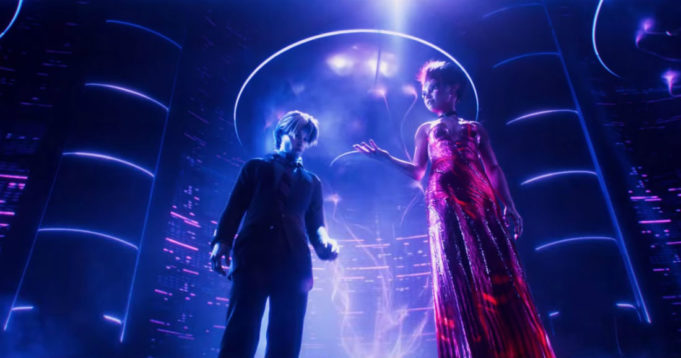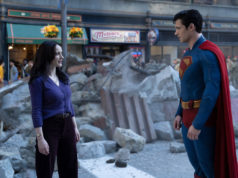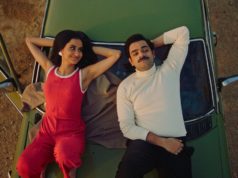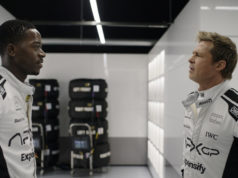Back in the 1980s, Steven Spielberg said that video games would become art the day they made someone cry. I think that already happened the first time somebody playing Pac-Man ran into a ghost just before he got an extra life. My point is, the great filmmaker has always believed in the expressive power of video games. This makes him the perfect choice to direct Ready Player One, which left me cold, though I’m chalking its failures up to its source.
The story is set in 2045, when the Internet, virtual reality, and gaming have all been consolidated into one system called the OASIS, which everyone is eager to escape into so they can flee harsh reality and remake their own identity. Five years deep into a global Easter egg hunt inside the OASIS designed by its late founder (Mark Rylance, playing all his scenes like he’s baked out of his mind), no one has so much as cracked the first clue in a contest where the prize is control of the OASIS itself. That is, until teenager Wade Watts a.k.a. Parzival (Tye Sheridan) solves the first riddle in a series, furiously reigniting the search. Wade has to bond with his online friends against a corporate behemoth to keep the Oasis free.
The film is based on Ernest Cline’s 1980s geek explosion of a novel, which I initially enjoyed until I realized that nostalgia was all it had to offer. To that end, Spielberg and co-writer Zak Penn have done much to improve on the book with the undergirding of a story. The film goes down smoothly, even if certain sequences in the OASIS like an auto race near the start and the climactic battle practically beg you to buy the DVD so you can wind it back and forth and catch all the ’80s references in the background.
The scenes taking place outside the OASIS are filmed as much like a 1980s movie as possible, and while I understand why Spielberg chooses to do this, the results still look flat. The film is basically a plea to look up from the screen every once in a while and enjoy real life, but Spielberg can’t make reality look more appealing than the virtual world here. Plus, the corporate villain (Ben Mendelsohn, who deserves better) is ineffectual and one-dimensional, and the romantic relationship between Parzival and a gaming girl named Art3mis (Olivia Cooke) doesn’t pull its weight. The movie misses its chance to argue in favor of net neutrality, and TV’s Westworld much more trenchantly on the discrepancies between our real lives and the lives we choose online.
There was one part of the movie that genuinely moved me, though, and it’s not part of the book. It’s an extended section in the middle of the film when Parzival and his gaming buddies (Cooke, Lena Waithe, Win Morisaki, and Philip Zhao) have to make their way through a simulation of the Overlook Hotel from Stanley Kubrick’s The Shining. As Spielberg lovingly reproduces all of that horror film’s best-known moments, I found myself helplessly drawn to one great director’s homage to an older one whom he collaborated with on A.I. and who shared his attention to his detail, if not his fundamental world-view. I got a kick out of it, and I’m not even a particular fan of The Shining. Honestly, I could have done with Spielberg spending the entire movie having his gamers go through scenes from his favorite movies. Screw the Easter egg hunt. The fact that Ready Player One‘s best scene has little to do with video games feels like it means something.
Ready Player One
Starring Tye Sheridan and Olivia Cooke. Directed by Steven Spielberg. Written by Zak Penn and Ernest Cline, based on Cline’s novel. Rated PG-13.












